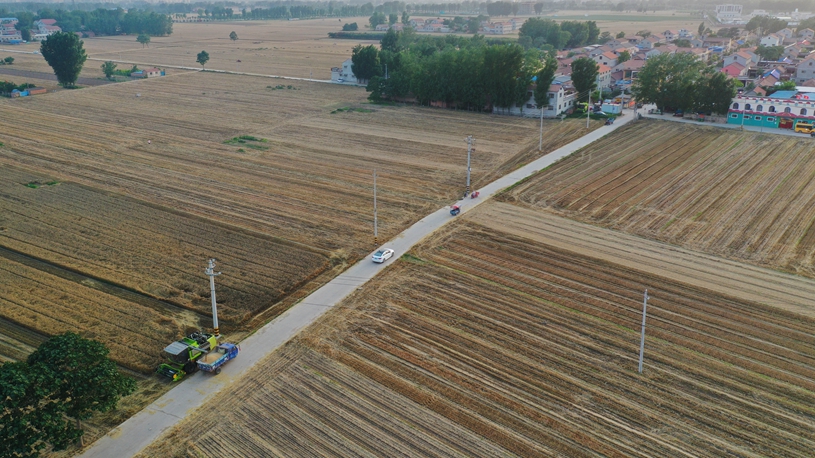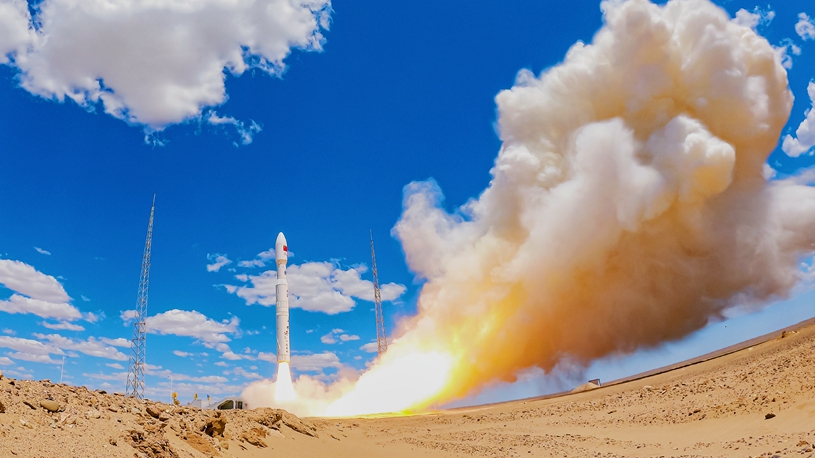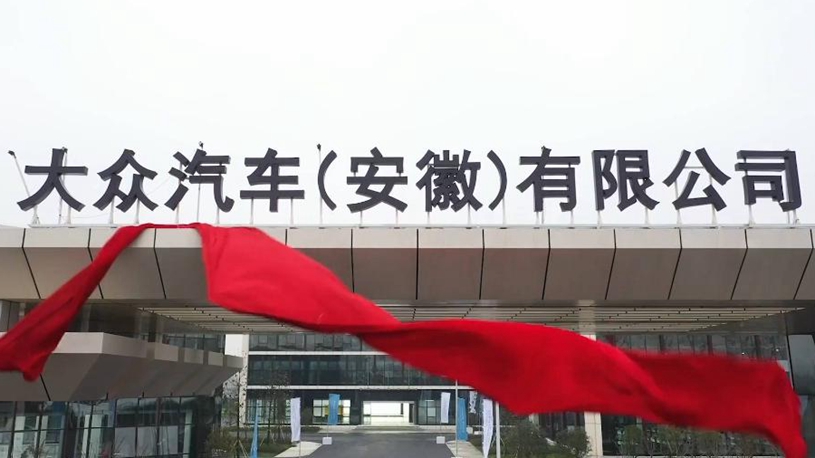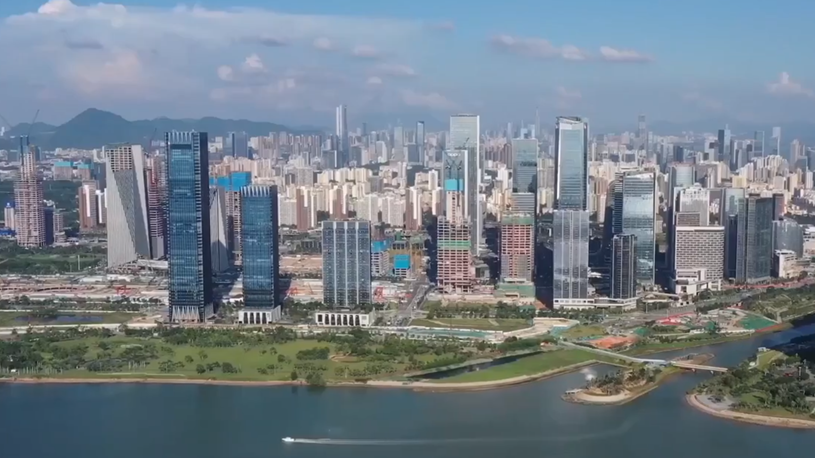
Aerial photo taken on April 12, 2019 shows the Lotus Tower in Colombo, capital of Sri Lanka. Under the Belt and Road Initiative, Sri Lanka and China signed the Lotus Tower agreement in 2012 to build the highest TV tower in South Asia. (Xinhua/Guo Lei)
The BRI aligns seamlessly with Sri Lanka's vision of becoming a maritime hub in the Indian Ocean. Through the development of ports and related infrastructure, Sri Lanka aims to leverage its strategic location and historical trade links to become a vibrant center for international trade and logistics.
by Yasiru Ranaraja
The China-proposed Belt and Road Initiative (BRI) has emerged as a transformative global strategy. Spanning continents, this initiative aims to enhance connectivity and foster economic cooperation among nations. Sri Lanka, with its strategic location in the Indian Ocean, has become a significant partner in the BRI, with the aspiration to establish itself as a maritime hub in the region. This article delves into the alignment between the BRI and Sri Lanka's national development strategy, shedding light on their joint efforts to catalyze Sri Lanka's journey toward a maritime powerhouse.
1. Historical Context: To understand Sri Lanka's ambitions as a maritime hub, it is vital to acknowledge the historical significance of its location in the Indian Ocean. The island country has long served as a vital link between the East and the West, benefitting from trade routes that traversed the region for centuries. This strategic advantage, combined with Sri Lanka's natural harbors, makes it an ideal place for global trade in the modern era.
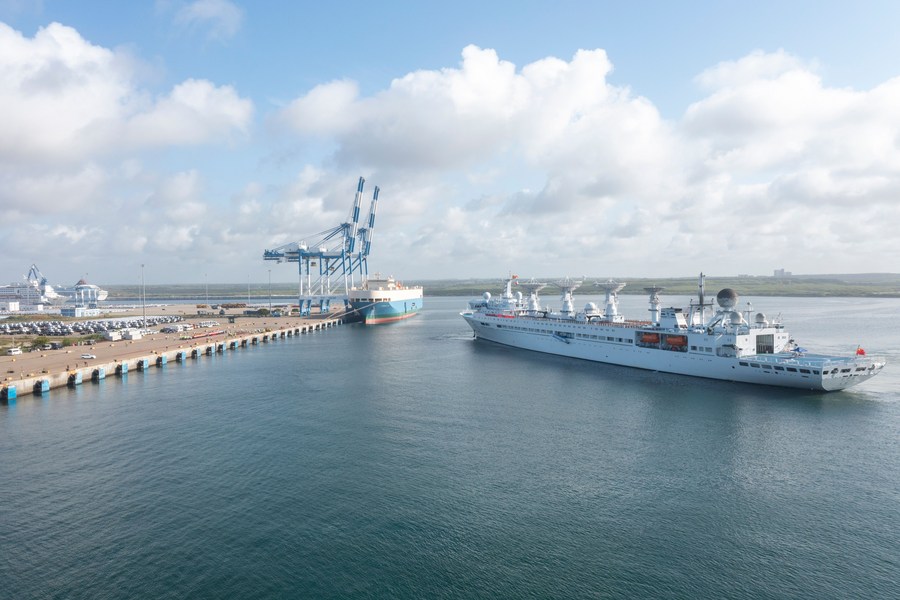
Photo taken on Aug. 16, 2022 shows China's space-tracking ship Yuanwang-5 docking at Sri Lanka's Hambantota International Port in Hambantota, Sri Lanka. (Hambantota International Port Group/Handout via Xinhua)
2. Belt and Road Initiative: The BRI, launched in 2013, has garnered attention worldwide. Comprising a vast network of infrastructure projects, including ports, railways, roads, and pipelines, it aims to foster economic growth and strengthen ties between participating countries. Sri Lanka's participation in the BRI reflects China's recognition of the country's geographic importance and its potential as a vital node in the BRI's maritime network.
3. Sri Lanka's National Development Strategy: Concurrently, Sri Lanka has adopted its national development strategy, which seeks to leverage its strategic location and develop a vibrant maritime hub. The strategy places a strong emphasis on port development, maritime connectivity, and trade facilitation. By aligning with the BRI, Sri Lanka aims to harness Chinese investments and expertise to expedite its national development goals.
4. Hambantota Port -- A Key Component: One of the prime examples of the BRI's influence in Sri Lanka is the Hambantota Port project. Constructed with substantial Chinese investment, the port has transformed a once-sleepy town into a bustling trade and logistics hub. By enhancing port infrastructure, the project has enabled large vessels to dock, boosting transshipment capabilities and attracting increased trade flows. Furthermore, the adjacent industrial zone is nurturing economic activities, generating employment opportunities, and supporting the overall vision of the development strategy.
5. Colombo Port City -- A Game-Changing Project: Another significant project contributing to Sri Lanka's maritime aspirations is Colombo Port City. Located adjacent to the country's main port, this ambitious endeavor aims to create a modern, sustainable city with world-class infrastructure and a financial center. The project has received substantial Chinese investment and expertise, further strengthening Sri Lanka's position as a regional hub for trade and finance.
6. Colombo Port: China Merchants Port Holdings (CMPort) has invested in the Colombo Port South Container Terminal. This investment aimed to enhance the port's capacity by increasing depth and improving the crane network. These improvements allowed large vessels to access the Colombo Port more easily. As a result of the investment, the port has witnessed a significant increase in traffic. Moreover, Sri Lanka has launched a project to build the largest commercial and logistics complex in South Asia at the Port of Colombo with a pledged investment of 392 million U.S. dollars from CMPort. This investment represents a significant milestone as it is the first major investment in Sri Lanka since the economic downturn during the previous year.
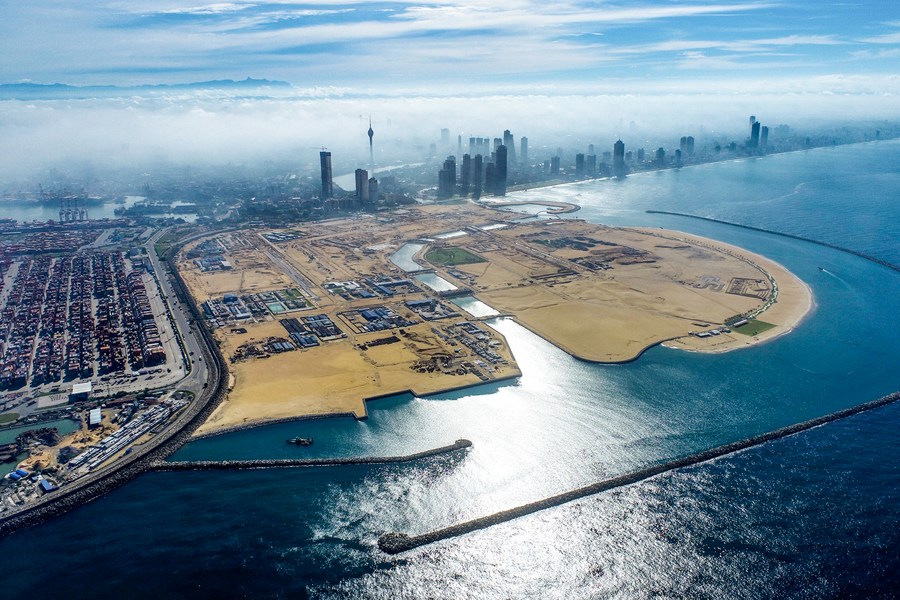
Aerial photo taken on Nov. 26, 2021 shows a panoramic view of the Colombo's Port City in Sri Lanka. (China's CHEC Port City Colombo (Pvt) Ltd./Handout via Xinhua)
7. Connectivity and Trade Facilitation: Connectivity lies at the heart of the BRI and Sri Lanka's national development strategy. By expanding and upgrading port infrastructure, Sri Lanka aims to improve maritime connectivity with neighboring countries and beyond. This enhanced connectivity facilitates seamless trade flows, reduces transit times, and attracts foreign direct investment. Sri Lanka's growing network of ports and logistical capabilities aligns perfectly with the BRI's broader vision of interconnected trade routes.
8. Geopolitical Implications: The alignment of the BRI and Sri Lankan national development strategy has significant geopolitical implications. Sri Lanka's emergence as a maritime hub not only enhances its economic status but also elevates its strategic importance in the Indian Ocean. As China seeks to secure its trade routes and maritime interests, the port development in Sri Lanka under the framework of the BRI reinforces China's presence in the region and fosters closer ties between the two countries.
9. Challenges and Considerations: While the BRI and Sri Lankan national development strategy offer immense potential, several challenges and considerations need to be addressed. These include environmental concerns, sustainable development practices, local community involvement, debt sustainability, and equitable distribution of economic benefits. Sri Lanka must strike a balance between development and preservation to ensure long-term social, economic, and environmental sustainability.
The BRI aligns seamlessly with Sri Lanka's vision of becoming a maritime hub in the Indian Ocean. Through the development of ports and related infrastructure, Sri Lanka aims to leverage its strategic location and historical trade links to become a vibrant center for international trade and logistics. As the BRI continues to unfold, the collaboration between China and Sri Lanka is poised to redefine Sri Lanka's role in the global economic landscape by enhancing its connectivity and unlocking its full potential as a maritime powerhouse.
Editor's note: Yasiru Ranaraja is an independent researcher on maritime affairs and BRI development.
The views expressed in this article are those of the author and do not necessarily reflect the positions of Xinhua News Agency.■




